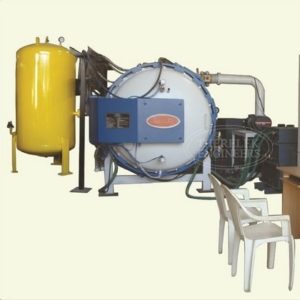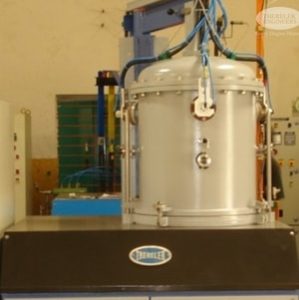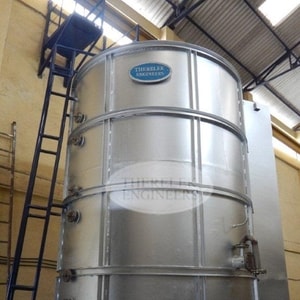Vacuum Annealing Furnace Manufacturer
Understanding the heating mechanics through Vacuum Annealing Furnace
The heating mechanics of an annealing furnace, aims at metamorphosis of the microstructure of a material in order to change its mechanical or electrical properties. For example, steel manufacturing units use annealing furnaces to bring out desired changes in the hardness of the steel, or increase its ductility or even some other kind of changes as per requirement. The steel is heated slowly and uniformly to a temperature, holding it there for around 1 to 4 hrs. (or even longer to complete the process of heat penetration), and eventually cooling it down at a controlled rate. Read more... The working routine of a Vacuum Annealing Furnace The mechanism of the heating treatment that goes in an annealing furnace starts off with heating of a material much beyond its recrystallization temperature and then eventually cooling down of the material once it has been held at the temperature, for a certain duration. The material recrystallizes as it cools post some atomic changes that were caused by the heating process with an aim to redistribute and eradicate dislocations in a piece of steel or some other product. Absolute precision is what a Vacuum Annealing furnace follows The annealing furnace way of heating calls for three different stages, namely the recovery stage, the recrystallization stage and the grain growth stage. Atmosphere furnaces or vacuum furnaces may also be used for the annealing process. An absolute control of accurate temperature and the authentic means of preventing decarburization, are some of the essential prerequisites of this unique heating equipment. It is important to note that in a box or roller hearth furnace, surface protection is often attained through application of decarb-resistant coating or by packing the work pieces in pipes, in which they are then surrounded by non-decarburizing material, such as spent charcoal and mica, or cast iron chips. Furnaces with prepared atmospheres frequently are used for the annealing of tool steels. Complexity of the journey The packing materials as mentioned above may carburize, decarburize, or just be neutral to the steel, completely depending on the heating temperature, the carbon content of the steel, and the density of the packing or even the particle size of the packing material. The primary task followed by such materials is to debar the decarburizing gases from coming in contact with the steel. If oxygen is to be kept out, the packing must be very tight and the sealing of the container perfect, for most gases can diffuse through ordinary seals at a surprisingly rapid rate at elevated temperatures. A precautionary step against the cracking up from thermal shock, is done by loading the furnace at a relatively low temperature in order to allow the furnace load to get heated up slowly with the furnace. Post soaking up at the annealing temperature, the work pieces are to be cooled down in the furnace at 10 to 25 °C/h to 540 °C or even lower. Anywhere below 540 °C (1000 °F), the cooling rate for most tool steels is no longer critical, and the work may be then cooled to the normal room temperature. Read less..
Vacuum Annealing Furnaces by Therelek
Front Loading/Horizontal Vacuum Furnace

Our Horizontal Vacuum Furnace has cold wall construction with metallic/graphite hot zone. The door swivels sideward and the material is loaded from the front.

Bottom Loading/Vertical Vacuum Furnace

Hearth support for job weight from 25 kg to 1000 kg. Rotary – Roots pump combination / Diffusion pump / Turbo Molecular pump based vacuum system.

Bell Jar Furnace

Therelek’s Bell furnace is designed with optimal performance for high sensitivity and delicate components.

Bell Annealing Furnace

Bell Annealer brings in excellent temperature uniformity, consistent quality and good production rates.


